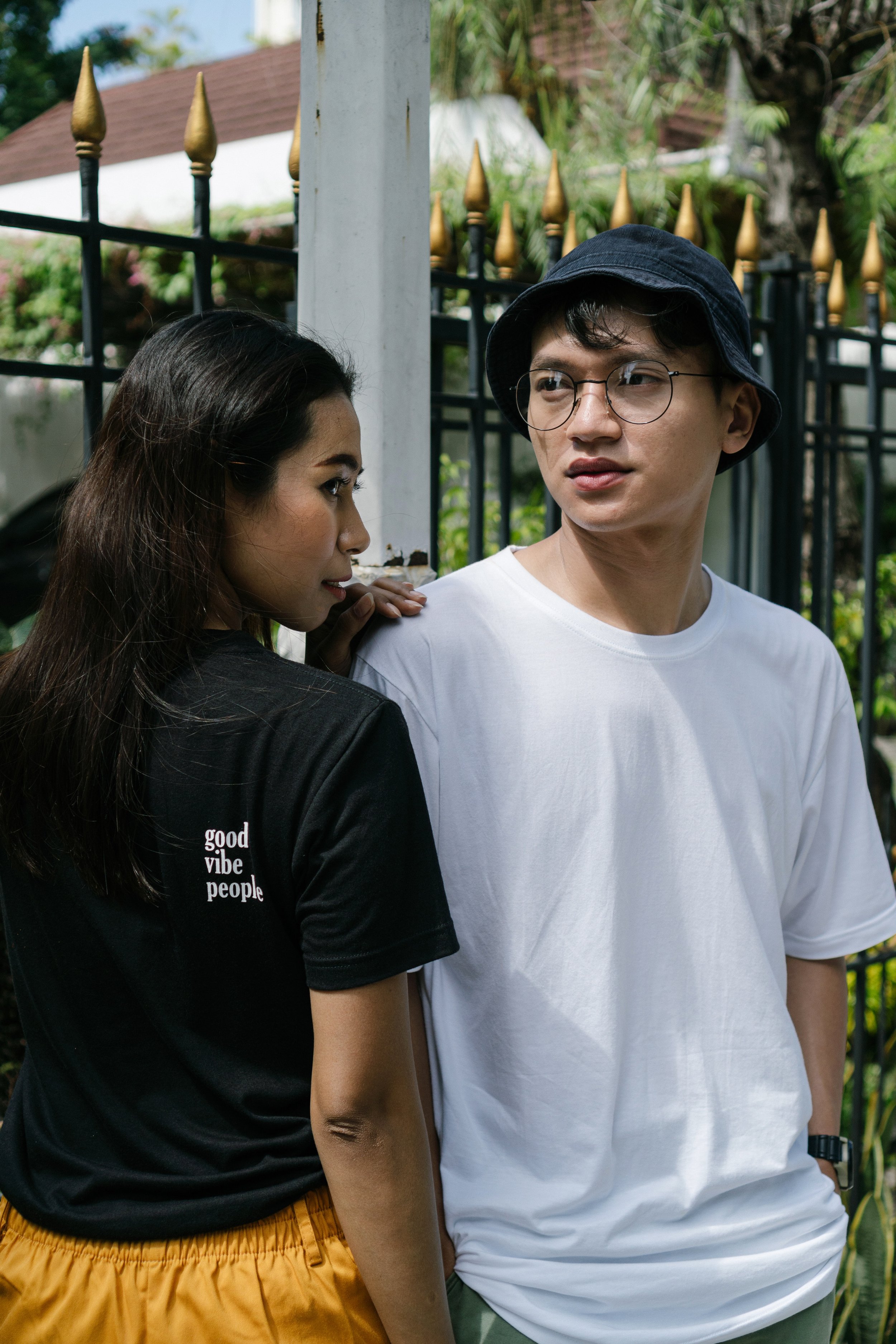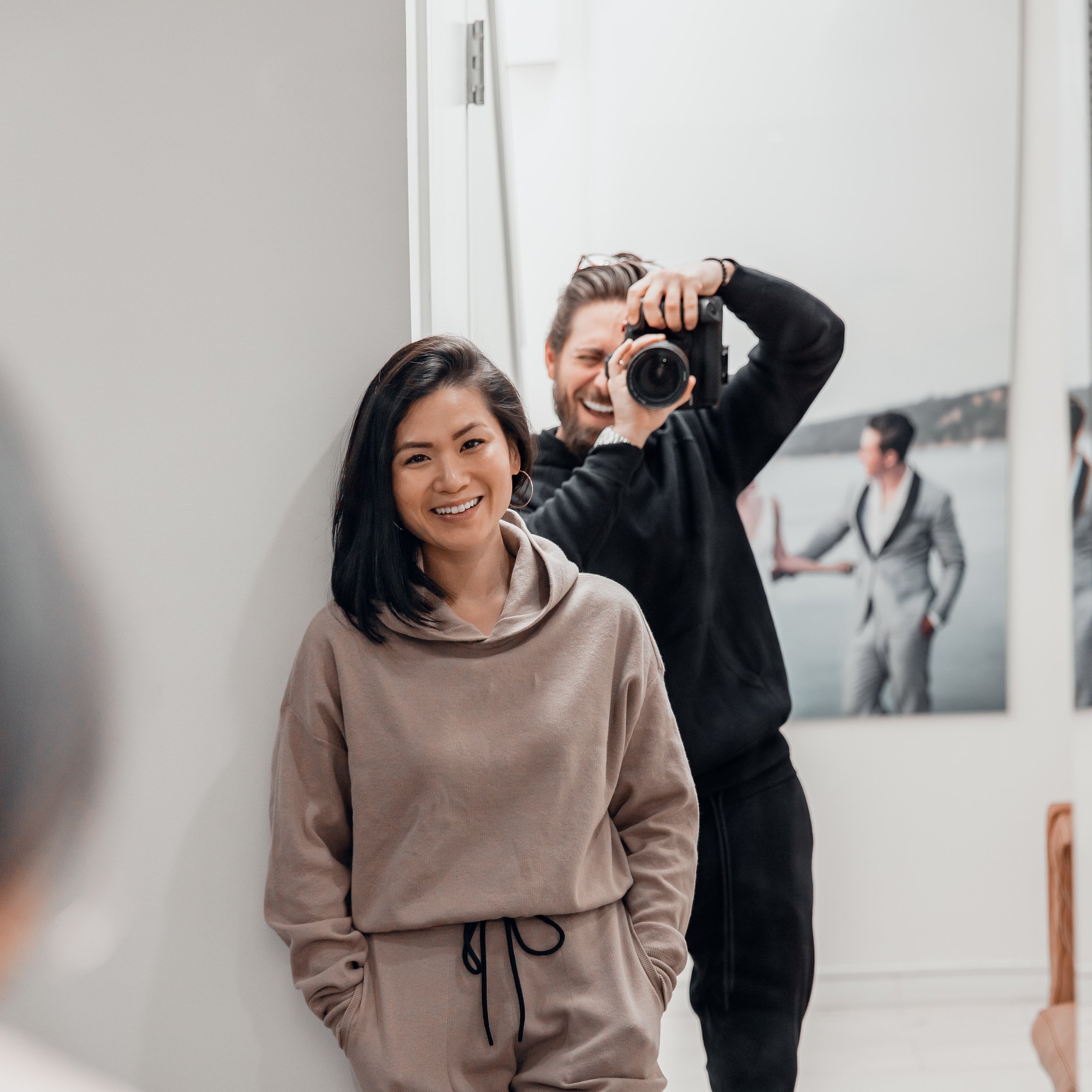Closet Staples: Where Did They Come From?

The origin of our basics
Cover Photo by Mediamodifier on Unsplash
As typical spring cleaning rituals began at the start of the season, the annual cleaning of my closet started in full swing - donating what I don't wear, and buying pieces to replace the empty spaces in my closet as a means of motivating myself to wear something other than sweats all summer. As I sifted through, piling up tops and bottoms, that seemed to only last as long as select media trends and then quickly die off, I realized that the pieces that were the oldest in my closet were not only just worn the longest, out of comfort, but they were also the ones that, ironically, never really got old. Despite having bought a plain white T-shirt 5 years ago, it is still a go-to when I’m too lazy to piece together anything too elaborate. We all have these similar staples in our closet, the timeless pieces that, no matter where you are or what year it is, always seem to fit the trends. But how did they come to be? And what has kept their basic looks so trendy generation after generation?
Jeans
The most go-to piece of clothing in your closet is probably your favorite pair of denim. Though not always as comfortable as the roomiest sweats you have, jeans have the magical ability of looking both classy and casual depending on what they are paired with. That, however, is quite the opposite of what they were originally intended for. Jacob Davis, a tailor, and Levi Strauss, wholesale fabric salesman, popularized the iconic pants, at the request of laborers in need of trousers that could withstand the ever-so-strenuous work they engaged in. To help reinforce the pockets and zipper, which were most frequently victim to rips, Davis and Strauss installed copper rivets to further secure their attachment.
With the success of the creation and the practicality it served, both men took out a patent, marking May 20th 1873 as the birthday of denim pants! While this history of denim is what most individuals are typically familiar with, recent findings have stated that the origin of denim pants stemmed from the days of slaves, as the thick material was able to withstand the labour and the elements through which they worked. As further insight into the early days of jeans explores the different origin stories, it is important to collectively consider the impact of each beginning on the product and its popularity today.
Photo by Lucas Lenzi on Unsplash
As the garment’s popularity grew, design improvements were made adding belt loops, zippers and the ever so iconic double arch stitching on the back pockets.
While initially catered for the male population, the 1930’s brought a change as the pants were so quickly styled by some of the top female actresses. Though associated with more rebellious movements over the following decades, high-fashion adopted the denim style with chic runway looks starting in the 70s, permeating the originally purposeful piece of clothing into more mainstream, daily attire. After nearly a century of its entrance in to our casual looks, jeans have become a no-brainer, more of a simple go to when we want to dress up or dress down, making it the epitome of staple clothing
T-shirt
Nowadays we don’t think twice about throwing on a t-shirt and running out the house, but had it been the early 1900’s, it may have been a different story. T-Shirts were initially manufactured as an undergarment for men, designed to act as a barrier between one's body and clothes worn over top. Given that it was a daily garment expected to catch direct grime from one's body, the appearance of a laundered shirt typically signified a man’s wealth. As the years progressed, women were also encouraged to wear them in place of corsets, as means of protecting from the cold and illnesses. It wasn’t until the late 30’s that American retail company Sears began promoting T-shirts as being double in use; promoting it as outershirt and undershirt.
Photo by Keriliwi on Unsplash
It wasn’t too long before some of Hollywood's bad boys began sporting the simple shirt as a symbol of their rebelliousness. Marlon Brando and James Dean brought a rugged, street style to the plain white T-shirt, enhancing its sex appeal by wearing tighter sizes. The nonconforming style of the T-shirt soon invaded the closets of women. Though starting out as a working class undergarment, the evolution of the plain white T-shirt from hidden undergarment to wardrobe staple is remarkable, as the simple shirt has even permeated some of the world's high fashion industries.
Leather jackets
While leather jackets originated as military wear in the early 1900s, it was introduced into the fashion scene by designer Irving Schott. Schott first created the motorcycle jacket in the late 1920’s, the Perfecto. Garnering inspiration from the button-up leather bomber jackets seen earlier in the century, Schott put a twist on his creation by installing a zipper down the front, contributing to a more polished silhouette and to allow motorcyclists to stay warm with their jackets closed in the wind they rode against.
Photo by Lea Øchel on Unsplash
It wasn’t until Marlon Brando and James Dean once again took the style in their own hands, bringing an association of rebelliousness with the garment, resulting in the trend of leather jackets taking off at full speed. Once women stepped up and rocked the jackets, they brought forth the versatility of the jackets by styling them with buttons and pins, making each jacket not only unique to the individual, but introducing a whole range of possibilities that were available with a single jacket. The trend has spanned from its beginning days of helping motorcyclists bear the cold, to now, a more edgy completion of an outfit famously advertised by off-duty models!
Leggings
Here's one you probably never thought about – leggings! While closely associated with gym wear or just casual day attire, leggings started off as male military wear in the 14th century! When the 1950’s finally hit, the style slowly permeated women's wardrobes. Audrey Hepburn first brought the hugging pants to light in the 50s. Though not entirely identical to leggings, the slim and fitted pants were quite the contrast from the usual wider leg styles that were more common around that era. With the invention of spandex material in the late 1950’s, the slim legged pants made a slow comeback for a decade, before becoming one of the main trends of the 70s and 80s.
Photo by Katerina Jerabkova on Unsplash
With actresses, such as Olivia Newton-John, wearing iconic outfits comprising of leggings (Sandy’s final look in Grease!) high-waisted leggings became the new going-out pants, commonly seen in bright or metallic shades to give the dance floor at nights some more excitement, and the gyms a splash of style in the morning for the popularized aerobics style of exercise. As the fad died down through the 90’s, the 2000’s showed a slow return. Initially, cropped versions were peeking out from under denim skirts and Bermuda shorts, to more recent days where they are seen as full-swing staples in athleisure looks!
Hoodies
It kind of seems weird that the one piece of clothing you have in your closet that you think the least about has an intricate history, but that’s the best part of a hoodie — it's good at hiding whatever you want it to. Whether you’re having a cold day, sad day or just got a bad haircut you need to cover up, you can never really go wrong with a hoodie. While hooded garments were common around the medieval ages, it wasn’t until the 1930’s that the now famous company Champion began manufacturing and marketing these hooded sweaters to laborers and athletes working in cold temperatures. As the trend for male athletes to present their girlfriends with their hoodies started up, schools and colleges caught on and began pumping out merchandising in the form of hoodies.
As with most comfort clothes we have seen, the mainstream popularity of hoodies stemmed greatly from the rebellion that it represented. We saw Rocky Balboa run up the iconic stairs of the Philadelphia Museum of Art sporting his gray hoodie, working against the odds to create a name for himself. They soon came to be seen as a trademark of street style as rising rappers, DJ’s and hip hop artists wore hoodies in the 80s and 90s, spreading the cultural significance of hoodies through mainstream pieces of clothing.
Photo by Andrew Wise on Unsplash
The typical affiliation of hoodies with those attempting to keep a lower profile has oftentimes been considered as a topic of concern, frequently rendering individuals skeptical of those who wear them. However, the comfort and protection that hoodies provide in the simplest of forms has transcended generations for nearly a century, showing just how resilient and timeless this piece of clothing is.
What closet staples do you want to see us do next?
Further Reading + References:
JEANS:
https://www.levistrauss.com/2019/07/04/the-history-of-denim/
https://www.vogue.fr/fashion/article/vogue-encyclopaedia-the-history-of-denim-jeans
https://nypost.com/2022/02/07/riveted-doc-unfolds-controversial-history-of-denim-jeans/
https://www.phillytrib.com/commentary/michaelcoard/enslaved-blacks-invented-blue-jeans/article_57de5262-5b78-534d-a133-bfc406f87a78.html
T-SHIRTS:
https://www.vogue.com.au/fashion/trends/everything-to-know-about-the-history-of-the-tshirt/image-gallery/65641e7e0e07560fceb738db1e973e7a
https://www.bbc.com/culture/article/20180202-t-shirts-the-worlds-most-expressive-garment
LEATHER JACKETS:
https://www.asos.com/men/fashion-feed/2014_02_03-mon/leather-jackets/
LEGGINGS:
https://www.bustle.com/p/everything-you-didnt-know-about-the-history-of-leggings-the-greatest-clothing-item-of-all-time-47445
HOODIES:
https://www.rollingstone.com/culture/culture-news/the-history-of-the-hoodie-237791/
https://www.smithsonianmag.com/smart-news/exhibition-spotlights-tangled-history-hoodie-180973689/
https://lucafaloni.com/blogs/news/the-history-of-the-hoodie-rebellion-empowerment
Priya Kar is a Psychology student who finds her own therapy through engaging in a multitude of creative outlets like writing, drawing and playing music. Her old-soul finds comfort in the simplicity of the era prior to cell phones, when the community would connect to listen and tell stories, a tradition she hopes will reemerge. Find her on instagram @priya_kar









